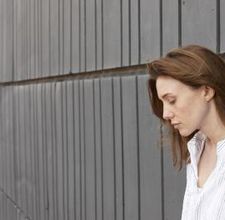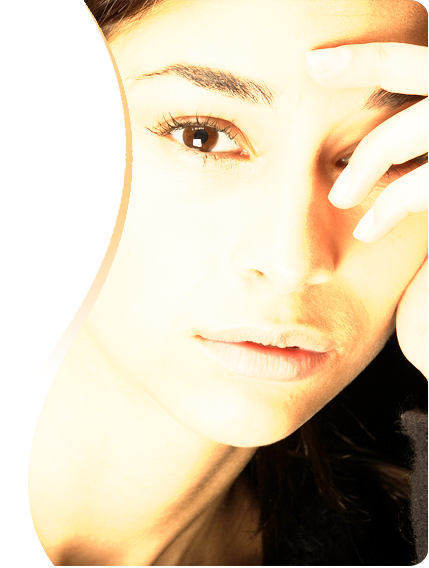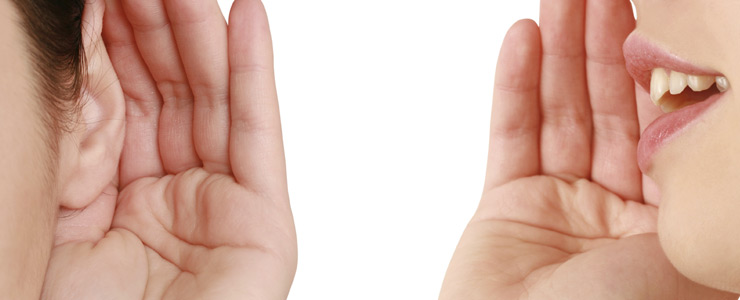Family Patterns
Honouring Emotion & Healing Emotional Wounds
Throughout the series of previous blogs posts, I have looked at a range of different emotions and how they work, including anger, fear, sadness and happiness. There are a rage of different emotions and ‘emotional clusters’ (or conditions) that have their own energy, experience and reactions. These include rejection, abandonment, jealousy, shame, guilt and even love. Today however I want to focus on the process of honouring and working through emotion.
The Process of Honouring Emotion
Emotions can be intense and we often do not know what to do with such emotional intensity, especially in times of distress or crisis. In Western culture we are taught that emotions are ‘lesser-than’ thought or the mind, and that they need to be contained or controlled. The problem with this type of thinking is that emotions act in similar ways as the ocean, weather patterns or the ecology, and cannot be controlled in the same way as we cannot control the other natural forces on this planet. So to honour an emotion is not to try to control or contain it.
Step 1: Remain Present with the Emotion
When we honour emotions we learn to remain present with them. As a therapist I often ask clients to feel into their bodies and feel any tension or emotion, and request that they identify the area of their body in tension and identify the type of emotion. Our natural reaction to pain is to resist it, avoid it or try to push it away. So I ask them to do the opposite and simply breathe into it. Using mindfulness practice is great for this stage of honouring emotion. There is a session in the “10 Days of Mindfulness Tips” that you can subscribe to on this website, that guides you thorough being present with your emotion. This subscription is free and includes seven meditation audios.
As we learn to remain present with the emotion without reacting to it, we learn several important skills. First, we learn to tolerate the intensity of it, this is great because the intensity often begins to diminish when we do not resist it or try to escape from it. Second, we learn to identify it and see it for what it is. This way we learn to see our demons rather than keep running from them. Finally, we learn that WE are not the emotion! We are really the observer who can witness our emotion. This is incredibly important. Learning to dis-identify from the emotion without resisting it, leads to an inner peacefulness and confidence that helps us to work effectively with emotion.
Step 2: Listen to the Emotion
 In this step, the key is to know that emotion is NOT there for no reason. It has a purpose! It is trying to tell you something important. I believe at the core of all dis-ease and emotional pain is something evolutionary to our being. Emotion is simply trying to alert us to something that needs to be recognised, adjusted or changed. Given the lack of emotional safety in our society, we hold emotional wounding because we were not allowed to listen to it, acknowledge it or act on it. As children, our emotions do not lie. They are our guidance mechanism. While as adults we have often been so wounded that we are completely confused about our emotions, we did not begin that way at birth.
In this step, the key is to know that emotion is NOT there for no reason. It has a purpose! It is trying to tell you something important. I believe at the core of all dis-ease and emotional pain is something evolutionary to our being. Emotion is simply trying to alert us to something that needs to be recognised, adjusted or changed. Given the lack of emotional safety in our society, we hold emotional wounding because we were not allowed to listen to it, acknowledge it or act on it. As children, our emotions do not lie. They are our guidance mechanism. While as adults we have often been so wounded that we are completely confused about our emotions, we did not begin that way at birth.
This is no one’s fault, as our parents and our parent’s parents had the same type of conditioning and wounding that resulted in our wounds. However, as adults with this awareness we can make a difference to our own lives and those generations that follow, by healing ourselves and learning to understand our adaptive emotions and heal our emotional wounds.
We can work out the difference between adaptive emotions and childhood wounding by feeling into our body and asking “what is the feeling?” and then “when was the first time I remember this feeling this way?” As we remain present with the emotions, breathe and allow memories, images or a ‘felt sense’ to emerge, we can start to identify what the wounding is about and how much of the currently felt emotion is adaptive. Often there are elements of both adaptive emotion and childhood wounding or patterns. Other indicators that can help differentiate between the two are the intensity of the emotion in respect to the current circumstance, and also if ‘a pattern’ of emotion, thought and action has repeated itself through your life. This is a theme that feels like a broken record.
For this stage of exploration of the emotional wound, therapy is a great option as we often need guidance through this journey of self-reflection. A good therapist will allow you to search your emotions safely and respectfully. If you do not feel comfortable with your therapist, find one you do feel comfortable with. This is your healing journey and safety and respect are paramount for your healing.
Step 3: Emotional Release and Action
 The final stage is emotional release. If you need to cry, cry. If you need to express anger do it safely for yourself and others (and I don’t just mean physically safe but also emotionally safe for others). Anger loves exercise, physical movement and verbal expression. If you need to journal emotions do so, you can learn what they are saying to you. If you are scared, make sure you are physically safe and then meditate, practice relaxation or mindfulness. Fear wants you to be safe! As long as there is not an actual physical threat to your safety, you can build an inner-sense of safety to step forward in your life. Happiness tells you things are generally in alignment in your life.
The final stage is emotional release. If you need to cry, cry. If you need to express anger do it safely for yourself and others (and I don’t just mean physically safe but also emotionally safe for others). Anger loves exercise, physical movement and verbal expression. If you need to journal emotions do so, you can learn what they are saying to you. If you are scared, make sure you are physically safe and then meditate, practice relaxation or mindfulness. Fear wants you to be safe! As long as there is not an actual physical threat to your safety, you can build an inner-sense of safety to step forward in your life. Happiness tells you things are generally in alignment in your life.
Action to take from these emotions that are guiding you may include establishing safety in your life. Look at your relationships, work environment, habits and addictions. What would you like to change? Are you ready for that change… breathe… It is ok… When you are ready change will happen! Action could also be about establishing interpersonal boundaries with people who are (often) unintentionally dis-respecting or harming you. Action could be with yourself and your current life practices. Having listened to your emotions through an honouring process, the answer of what you need to do will generally become clearer. Again, this is where a trusted therapist could help.
Another option you have to learn how to honour your emotions is through workshops that focus on working with emotion. Conscious Solution presents the workshop “Surfing the Waves of Emotion” which creates a safe and respectful space within a group context, for learning important skills and strategies for honouring emotion rather than getting pulled out to sea or dumped by the waves. Currently, these workshops are held in the Sunshine Coast, Queensland, Australia.
A journey through emotional wounds can be a harrowing one at first, but ultimately it is a rewarding one. Knowing how to master your emotional self is incredibly empowering! It can help you find your balance and your centre. It can help you know and honour your inner truth. It is the basis of navigating through the torrents of life.
When have you discovered important truths by listening to your emotions?
Click here to find out more about the “Surfing the Waves of Emotion” Workshop!
Sadness: The Doorway To Our Soul
In my last two blogs, I have looked at anger and fear. Today I am going to focus on the emotion ‘sadness’. Sadness is regularly labelled as “over emotional” and seen as a bad thing. We often try so hard to look happy and positive, and yet deep down in our hearts, tears are rolling down our cheeks. Sadness is often avoided or even supressed. If people have learnt it is weak to express their sadness, then they will often channel their hurt into anger. This never works! In the same way that crying when angry will not shift anger and will certainly not show you the truth behind the anger, being angry when it is appropriate to be sad will not shift the sadness. Inappropriate anger will keep you stuck in emotional pain unless you melt the ice, feel into your heart and cry.
The Gift of Sadness
I have read that crying is the door way to our soul! What a beautiful idea!!! I know when I allow myself to cry deeply, I feel relived afterwards and just want to sleep peacefully. I like feeling sadness around water.. .. .. When it’s raining, in the bath, near a river or the ocean. Water calms me and brings up the feeling of sadness so I can cry.
Like all emotion, sadness has body wisdom and a message for us to hear. Grief and sadness tell us something important. It tells us that we miss something or someone when they are gone. Without sadness, we would never know just how meaningful and important they were in our lives. So sadness teaches us to love and honor what and who we love.
Trudy’s Story: Inconsolable Sadness
Trudy had always strived to be happy while she dragged around an empty heart. She could not work put why she continuously felt a deep grief within her chest. She just put it out of her mind and kept smiling.
This worked fine, she thought, until the day when her last child left home. Adrienne was 19 years old and doing well in his life, and it was time for him to go to a university in another city. Trudy desperately tried to keep face in front of everyone else. But when she was by herself she just constantly cried. Trudy had no idea why she felt so deeply sad all the time until she found in an old friend who had been there too.
One Friday afternoon, Trudy sat in a coffee shop. She thought no-one she knew was around, so she put down her happy facade and became lost in her own thoughts.
“Trudy?” She heard a voice say and turned upwards to see tall woman standing before her. At first she could not place the face, but then it dawned on her.. .. .. Catherine, a teenage friend she had lost contact with years ago. “I was walking past and saw you. You look so sad!” Catherine stated.
As soon as Catherine’s words were said, tears started rolling down Trudy’s cheeks She tried to wipe them away and excuse herself but Catherine gently reassured her that it is OK, and that maybe she should talk about it. Reluctantly at first, Trudy started to talk. Trudy shared with her that Adrienne had left home and that she was crying all the time. Catherine nodded and smiled while stating “that happened to me too so I saw a counsellor. What I learnt was that the sadness was far bigger than my grief for my baby leaving home. I didn’t realise I was holding that much sadness for things that happened way back in my life! It was painful to talk about it at first but it was a relief in the end. I feel much better now!”
Trudy listened to her old friend Catherine. The synchronicity of seeing Catherine on that Friday afternoon was perfect. Both of them had childhoods where they were not allowed to express their sadness. Trudy learnt in counseling that while her mother was sick, she was not allowed to cry or else she told that she was being selfish and was worrying her mother unnecessarily. She further learnt that because she couldn’t cry and express her fears and sadness, that she had bottled it all down. As a child she was scared her mother was going to die, like Catherine’s mother had. While Trudy’s mother was sick for months, she eventually recovered and all was forgotten.. .. .. Or so she thought! From that experience, Trudy learnt to suppress her sadness for others. She further suppressed her feelings because she thought they were not legitimate because she had not actually lost her mother wile Catherine had.
Throughout counseling she also caught up with Catherine. They were able to speak with each other far more openly than they could in the past. Their friendship deepened as they learnt about themselves with each other. Bit by bit, Trudy’s sadness diminished and she began to feel joy at times for the first time she could remember.
Trudy’s story is a great example of how suppressed sadness can block our ability to feel joy. It is also a reminder that as we open to another with respect and love, how feeling our emotions that we once suppressed can deepen interpersonal connections.
Has there been a time of sadness that you have suppressed?
Have you tried to simply ‘move on’ from a sad experience well before you are ready? I would love to hear from you..
[Note. All stories used in this blog are fictional characters based on the wisdom I gain from working with clients. No character in this blog is an actual person or a client]
The Advantages & Dis-advantages of Fear
Fear, like all other emotions, has both an adaptive and non-adaptive form. In its adaptive form, fear is our friend. It is there to tell us something important. It tells us that there is danger ahead and becomes the fight/flight response. Fear is fantastic if we are standing at the edge of a steep cliff. It will tell us to back off so we do not fall over and die. Fear is also great if there is an immediate dangerous threat such as a vicious bear that is about to attack. Fear will increase our adrenals, pump our blood out to our hands and feet (where we need them) and it will increase the rate of our thoughts to try to get us out of danger. This type of fear response is perfectly normal and adaptive!
When Fear Becomes Distorted: Anxiety
When fear becomes non-adaptive or distorted, then we begin to have problems. Anxiety is what occurs when fear becomes distorted. Anxiety is like losing the off button. The fear response stays on all the time. Some reasons why anxiety is unhealthy include:
Anxiety is felt in epidemic proportions in Western culture and can result in a great deal of harm to ourselves and others. One of many examples is when the US Navy accidentally blew up a civilian aircraft over the Middle East in the 90’s. This accident was partly due to technological inadequacies but when the investigation occurred, it was found that the major cause was miscalculation on behalf of Navy personnel due to fear -based expectations.
Anxiety harms our bodies, our minds, our interpersonal relationships, our communities, and our souls. Anxiety holds us back from being all we can be and reaching our potential. Anxiety smothers and destroys love and connection. When we react out of distorted fear, we are far more likely to mis-judge situations and destroy what is most dear to our hearts. So while on one hand, fear can save us, it can have the opposite effect when it becomes distorted.
Danielle’s Story: Overcoming Anxiety
Danielle discovered just how unhealthy her anxiety was when she found herself in hospital. She had what she thought was a heart attack. Her heart was racing, she became dizzy and disoriented, and could hardly breathe. She thought she was going to die. But after a few hours in the emergency ward the doctor said it was a panic attack and she was being released to go home. Dazed, stressed and worried, Danielle was not sure what to make of the news.
After visiting her general doctor, she got a referral to see a psychologist. She did not want to take mediation so she opted for therapy. In therapy, she explored her family background and what may have contributed to her anxiety. She always thought she just had a nervous personality and was not particularly intelligent. In therapy she learnt that anxiety decreases cognitive skills and could have affected her academic performance as a child. She further learnt that people can learn anxiety. There were no traumas in her childhood and her relationship with her parents was loving. But as she explored her family, it became obvious that her mum was a survivor of World War II in London and had high anxiety herself. Her mum’s anxiety was not treated, and even though her mum was a small child in the war, the effects of war trauma were still playing out in Daniele’s life.
Bit by bit, Danielle learnt how to reduce her anxiety by reality checking her catastrophising thoughts, and through practicing mediation and mindfulness. Systematically, her inner demons dissolved and she was able to do things that she never previously thought she could.
Danielle’s story shows us how we can overcome anxiety and learn to empower ourselves.
What experiences have you had where you overcame your fears and succeeded at things you did not think were possible?
[Note. All stories used in this blog are fictional characters based on the wisdom I gain from working with clients. No character in this blog is an actual person or a client]
Anger as the Basis of Motivation and Personal Power
Anger: The Misunderstood Emotion!
Anger is a very misunderstood emotion in our culture. It is often seen as ‘strong’ or dangerous. Unfortunately the people who believe anger is strong and are prone to misusing anger through physical or verbal abuse, are often struggling with huge inner fears and are left feeling out of control and disempowered. So in truth their anger weakens them. Those who believe anger is dangerous often believe that their feelings of anger should be avoided at all cost. Both of these positions are generally not helpful.
Anger is an emotion! This may seem obvious, but it is not. A lot of people think anger is an action, and usually a violent action. This can be heard in how people speak about anger. It might be said, “He’s an angry person!” Well, actually he is probably a violent person with distorted beliefs about control. He would feel anger but that does not mean he has to act on it. It may also be said “my anger just got the better of me”. Again, this is also not true. An emotion does not justify an action. It could be said “she just doesn’t deal with her anger well”. Again, an emotion is being used to excuse behaviour.
Anger has never done anything! Anger is an emotion that in its adaptive form can be incredibly empowering and liberating. Anger demands that we face the truth about ourselves and our circumstances. Anger is there to protect us. Anger can be a fantastic motivating force. The key is knowing how to work with this powerful energy, and bring in reason when it comes to taking action.
The two common conditioned patterns that involve anger are either suppression or ‘the anger cycle’. I will demonstrate each of these patterns in two personal stories about anger.
Veronica and Sandy’s Stories: The Nice Pattern and the Anger Cycle
Veronica’s family always seemed nice until she learnt about the family pattern that kept her anger suppressed. She had always been a ‘nice’ other people and had learnt how important it was to put others first. This helped her to have some great friendships but when she began to date Harry, her ‘nice pattern’ became her biggest problem. Veronica did not feel anger, and when Harry started putting her down, disregarding what was important to her, not considering her needs and generally treating her like she was his slave or simply irrelevant, she began to regularly cry. At no point did she say “stop” or feel the anger necessary for self-preservation. Rather she began to believe it was all her problem and that there was something terribly wrong her. After a year, she felt deeply depressed and accessed professional help.
Sandy experienced the opposite to Veronica. She too thought there was something wrong with her because she was always angry, however she would not let anyone else know that. Sandy felt deeply frustrated because nothing ever seemed to go her way. Other people let her down constantly and when she confronted them, they would lie to her or just walk away. She was great at telling other people exactly what they were doing wrong, and how they could improve their behaviour. But she was deeply lonely and felt very alone.
 Veronica and Sandy’s anger patterns are at opposite ends of the spectrum. They have different healing journeys to liberate each of them from their respective patterns.
Veronica and Sandy’s anger patterns are at opposite ends of the spectrum. They have different healing journeys to liberate each of them from their respective patterns.
After Veronica accessed a counselor who she felt safe with, she began to work through her ‘nice pattern’. She realised that while it is a virtue to generally be kind to other people, being too nice is when you cannot feel anger when it is appropriate to feel it, and you do not protect yourself from real harm (either emotionally or physically). Veronica had to learn how to value herself and what is important to her, to begin to feel legitimate and start to feel anger. As she began to breathe, relax and allow the feelings of anger in her body without automatically pushing them away or swallowing them, she began to learn how to safely feel and express her anger.
Sandy also sort help for her loneliness and how to cope with other people’s issues. Bit by bit Sandy learnt to challenge some of her own beliefs about right and wrong, and began to see the world was not so black and white. Slowly she began to see that her judgments of other people were pushing them away and sabotaging closeness in her relationships. Beliefs of entitlement and criticism had constantly fed her anger which kept it inflamed. After a while she also discovered that underneath the anger cycle was deep sadness, an emotion which she had not let herself feel for a very long time.
For both Veronica and Sandy, learning safe ways to express their anger was a vital part of their healing. Anger wants physical and verbal expression. So safe anger release is when we find space to be on our own and allow ourselves to express the anger. This expression also needs to be safe to ourselves. Angry writing, art, dance, exercise, drumming or music or hitting cushions or a punching bag are all fine.
Safe Anger Release & Healthy Adaptive Action
When I feel anger, I drive to a secluded look out, stop the car and put on music. I then pretend the person is sitting next to me and I let them have it. I say whatever I need to for as long as I need to. I know most of what I say is simply anger expressing itself and is not actually true… but I need to hear it because the anger will ultimately tell me the truth. In fact anger will not let go until we hear the truth!!! I might start to yell at my partner, then my parents and then myself.. .. .. And then the anger shifts!
When I hit on the truth of why I am really angry, anger transmutes into sadness or laughter. Anger is a secondary emotion to hurt, so when I hear why I am really hurt, the anger is released. Once anger is released then I need to step back and look at what I need to do with my truth in a more rational way. I might need to strengthen my boundaries with some people, or perhaps I need to openly communicate something to someone. Maybe I need to re-evaluate a friendship. Whatever I need to do in terms of the action, I have let myself safely feel the anger and listened to its underlying message. This is the process of ‘honoring anger’ in a way that channels the emotion into motivation and personal power. Learning to safely work with our anger enhances personal power with respect to ourselves and others.
Have you become stuck in your anger?
Were you able to channel your anger in ways that protected you or empowered you?
[Note. All stories used in this blog are fictional characters based on the wisdom I gain from working with clients. No character in this blog is an actual person or a client]
Remember Who You Are!
Breaking Free From The Pain Of Having Your Emotions Dismissed & Finding Your Truth
Have you ever experienced a time when you were really interested in, or passionate about something but as you spoke about it to another person, they dismissed it as trivial or irrelevant? Perhaps you were talking about how you felt about something important to you and it was demolished by the other person? If you can relate, then you will know what I am talking about in this blog…
When Our Emotions Are Dismissed
When someone dismisses or fails to see the significance of how you feel about something important to you, it is not unusual to feel deeply sad or angry. It is even more insidious if we continuously experience this reaction as we are growing up throughout childhood. It is “insidious” because we still experience the emotions associated with being dismissed as adults, but we have often forgotten the actual memories and therefore do not understand why we feel the way we do. This leads to what is called “shaming”, and eventually results in low self-esteem and self-worth.
There are three levels of having emotions dismissed that I will discuss. They are the ‘adaptive response’, the ‘childhood emotional wound’ and the ‘identity’ associated with having your emotions dismissed over a prolonged period of time.
Adaptive Emotional Response to Dismissed Emotions
The first level is the adaptive response to shaming emotions which a healthy and balanced adult may have when they experience this boundary violation. By ‘boundary violation’ I am referring to having something important being dismissed. The hurt, anger and/or sadness resulting from this experience are actually telling us that this treatment is not OK. The other person may be unaware of their boundary violation and unintentionally hurt the other, therefore it is important to communicate assertively. Communication which is compassionate, understanding and assertive can lead to positive learning for other people. Ultimately, this aims to be empowering for both parties. So this is an example of adaptive emotions at work and how we can respond to our emotions in ways that open up learning opportunities and mutual respect. The emotions, sadness, hurt and anger are felt and are appropriate and proportional to the event, and yet the person choses how to best respond because they are aware of their feelings and actions.
Childhood Wounding of Dismissed Emotion
 The second layer is emotional wounding from childhood experiences of having emotions dismissed, misunderstood, ignored or trivialised. This layer is difficult to work through because as I said earlier, conscious awareness associated with the emotional reaction is rarely present, and the exposure to this treatment is often prolonged. This will result in the development of unconscious patterns (of thinking, feeling and acting) with a real emotional need at its core. To heal this layer will require some inner-work to increase awareness, compassion and understanding for everyone involved.
The second layer is emotional wounding from childhood experiences of having emotions dismissed, misunderstood, ignored or trivialised. This layer is difficult to work through because as I said earlier, conscious awareness associated with the emotional reaction is rarely present, and the exposure to this treatment is often prolonged. This will result in the development of unconscious patterns (of thinking, feeling and acting) with a real emotional need at its core. To heal this layer will require some inner-work to increase awareness, compassion and understanding for everyone involved.
As we look deeper into this layer, we often discover parental shaming, or a significant other dismissing a child’s emotional needs. Western society has traditionally been largely inept at promoting emotional safety, therefore this is not uncommon. It is not about blaming parents or earlier generations, but rather acknowledging the wounding within while understanding that significant others did the best they could with what they knew. Of course this can be difficult if there has been active child abuse on top of the neglect, however this is outside the scope of this blog. Please seek trusted therapeutic assistance if you are worried about powerful emotions resulting from child abuse. In a nut shell, often our parents’ generation and generations before them, simply did not know about the damaging effects of dismissing emotional needs. And it is highly likely that they did not have their emotional needs met either. Our job with this information is to increase our self-awareness, to heal ourselves on the inside and to learn new skills that honour emotions and personal boundaries.
Dismissing Our Own Emotional Needs
The third and most insidious layer of dismissing emotions is when we learn to treat ourselves this way. I call it “insidious” because it is hard to see. Our relationship with ourselves becomes toxic when we learn to dismiss our own adaptive emotions.
Our adaptive emotions are our guidance mechanism system. They will indicate what is safe and what is dangerous or a violation to our body, mind or soul. It is only through disconnection from our natural emotional balance that we could possibly put toxins into our bodies, or use substances to obliterate ourselves, or stay in destructive interpersonal relationships. It is easy to begin to see just how out of whack our emotional guidance is when we look at Western Society. That horror and action movies are best sellers says something! That drug and alcohol use is so high says something! That approximately 30% of intimate relationships in this country experience violence says something! Our emotional guidance mechanism system has become largely useless because we simply do not know how to use it. Instead we have learnt to doubt ourselves, dismiss our deeply held body wisdom and personal truths, and base our decisions on rational thinking. We have forgotten who we are!
Over the next four blogs I will share some stories that demonstrate the process of coming into emotional awareness from childhood wounding and conditioned patterns. In these stories, I will focus on the emotions of anger, guilt, fear and sadness. Following those blogs, I will then begin to look at healing solutions for emotional wounds and how to reconnect with healthy adaptive emotions.
What has helped you to recover from having your emotions dismissed?
Healing Family Legacies
Psychospiritual Reflections 9.1.2012
In my blog “The Difference Between the Conscious & Unconscious in the Law of Attraction” I focused on the differences between the conscious mind and the unconscious, and I looked at what it means to be consciously responsible for choices. Today I want to take a closer look at what unconscious patterns actually are and what is involved in healing them.
Unconscious Family Patterns
Unconscious patterns are made up of memories, images, emotional reactions, beliefs and patterns of behaving that a person is not consciously aware of. While these patterns are unseen by the conscious mind they do however manifest in everyday life as self sabotage or self-destructive behaviour. They also tend to lead to suffering. Therefore, sooner or later we often turn to face ourselves and work through our patterns in order to find freedom from this suffering.
Unconscious patterns can be an individuals attempt at surviving a childhood situation or they can be learnt from the family and therefore a generational pattern. Often what worked to survive childhood pain becomes an unconscious pattern of thought, feelings and actions in adulthood that causes misery. Likewise, it is amazing how powerful family pattern are. We may live a part from our family for decades and believe we have changed so much as a person through those experiences. Yet when we visit our family, low and behold we are seventeen again and back in the family dynamics and patterns. It can almost make you cringe!
In some alternative and esoteric modalities, unconscious patterns may also include pasty life patterns and even future life patterns. Some people believe in their existence and some do not, what I mainly want to point out her though is that if there are past lives, then it is important not to mistake a person or personality in another life as “yourself”. In a similar way that we are not responsible for the unconscious, we are also not our past lives. What I generally find is that whether you identify a pattern as current interpersonal issues, past inner-child issues, or past life memories, the psychological theme of the pattern is the same. The patterns that require healing emerge throughout our lives and are often what cause us the most pain.
The Healing Process
 So when we look at healing these unconscious patterns and releasing them, it is easier said than done. Generally I find a combination of modalities is most helpful. Psychological therapies such as counselling, touch therapies such as massage, energy techniques such as kinesiology and mindfulness practice such as yoga are all helpful to release unconscious patterns.
So when we look at healing these unconscious patterns and releasing them, it is easier said than done. Generally I find a combination of modalities is most helpful. Psychological therapies such as counselling, touch therapies such as massage, energy techniques such as kinesiology and mindfulness practice such as yoga are all helpful to release unconscious patterns.
Ultimately conscious awareness is the key to breaking free from these unconscious patterns. When we can see the patterns clearly, we are already 50% there. The more consciously aware of the thoughts, feelings and actions within the pattern, and how it came about, the more we eventually get to a point where we do not have to repeat it. We simply see it for what it is and cease to believe the beliefs behind it.
The next step is one of forgiveness to self and other. This is a process of release… and not condoning bad or abusive behaviour. So when I talk about forgiveness, I am referring to recognising the emotional pain we hold inside ourselves and bringing compassion and understanding into it.
The final step is to learn skills and practices of new more adaptive patterns. We are creatures of habit and the conscious mind does rely of patterns of behaviour. The difference is that we can make more conscious choices about how we respond to events in the world when we know ourselves. We learn HOW to be responsible for our thoughts, feelings and actions. The new patterns may be more mindful rather than emotionally reactive.
Next time I want to look at another type of relationship that has an annoying habit of bringing our unconscious patterns to our conscious awareness. Yes, that’s right… I’m talking about intimate relationships!!! I will discuss the basis of conscious and unconscious relationship and how the Law of Attraction plays such an uncanny role in helping us find our perfect match.
Have your say on the Law of Attraction and contribute to the greater consciousnesses of humanity ….
The Nature of Unconscious Attraction Patterns
How Does the Law of Attraction Work?
If it is Unconscious… What Can I do About That?
 The fourth point in the “Law of Attraction… Are My Beliefs Ruining MY Life?” is that the unconscious holds beliefs that work its own kind of magic that we are not conscious of! Our conscious mind may desire a whole lot of material good and types of relationships. However the process of unconscious Attraction does not really work that way.
The fourth point in the “Law of Attraction… Are My Beliefs Ruining MY Life?” is that the unconscious holds beliefs that work its own kind of magic that we are not conscious of! Our conscious mind may desire a whole lot of material good and types of relationships. However the process of unconscious Attraction does not really work that way.
Through previous blogs we see that the unconscious and awakening spiritual awareness involves a lot more than what we might consciously want. I personally believe alignment between our conscious mind and the unconscious can attract experiences to us. I belief in certain states of mind we are attracted towards certain types of relationships and synchronous events that can lead to successful outcomes. However, I also believe that there are certain themes that we are put on this Earth to learn from. We could call it “soul lessons”, “sacred contracts”, fate or God’s Will. Whatever you call it, this is where certain themes or issues play out and are being resolved through our life experience.
Psychospiritual Themes and Psychological Patterns
Even if we step away from a spiritual understanding and adopt a purely psychological perspective, these themes show up throughout a person’s life. Whether we focus on a person’s presenting issue in therapy stemming from their current interpersonal problems or whether we focus on the inner child or family generational issues, the themes are generally the same. For those who work in alternative or esoteric fields and embrace past lives, again the themes are generally the same. So it is the themes and the psychological patterns connected to those themes that are important here.
Psychological themes have a core belief or issue that the pattern is attached to. Like a spider’s web, everything is built around a core point or a few key issues. These themes differ for all of us. They could be about self-value or worth, they could be about narcissism, control, abandonment, judgement, public humiliation, success, self-efficacy, over or under responsibility, lovability, just to name a few. Patterns are made up of the thoughts, feelings and actions that are the manifestation of the core belief. These patterns could be self-sabotage patterns, addictions, avoidance patterns, or self-destructive patterns. The pattern and the core issues can be identified either through observing a repetitive theme in a person’s life or by the disproportion of the emotional reaction to a current event. These themes may show up in the area of intimate relationship, employment, housing, finances, family, substance abuse or a range of other areas in a person’s life.
So through the last few paragraphs I have worked my way from the unconscious/spiritual dimension of core beliefs and patterns through to the material/practical arena of how they may be manifested.
Responsibility and the Unconscious
As a rule of thumb, in my clinical experience and what is understood in Eastern traditions and alternative therapies, is that generally the outer world and behaviour reflects the inner world, even if the person is not consciously aware of why. This is not the fault of the person, it is normal. Until we do a lot of deep exploration, no one has a clue of what is really happening inside them! So I like to steer clear of saying it is their responsibility or choice to “attract in experiences” and would rather say it is their choice whether they heal or not. Even then there needs to be a readiness and it may not be now. This too is not a bad thing. I have complete faith that people do heal when they are consciously and unconsciously ready to do so. This readiness is essential to increasing awareness and releasing old patterns. But I do want to emphasise if they are not ready it is because they are legitimately not ready…a healthy respect for the safety mechanism in the mind and the unconscious forces in life, is important I belief.
A Combination of Modalities Works Best
Working to release patterns and core beliefs may take a while. They tend to have a circular nature, they are layered as they say in Gestalt therapy… like layers of an onion. Through each layer we understand a little more. The wisdom of that theme becomes deeper. Eventually we see it so clearly we do not need to play it out anymore. We see it for what it is! I love the practice of mindfulness in combination with energy healing modalities for releasing patterns. As a psychotherapist/ psychologist, I enjoy working with people who are working through the conscious with me and are accessing either kinesiology, spiritual healing, acupuncture, a chiropractor or similar fields for the unconscious energy shifts.
The journey is as important as the end result. Life does not stop and we are suddenly perfectly healed. Rather, we wake up every now and then and realise how far we have come.
My Personal Spiritual Healing Journey
For me personally, I realise that I forgot that I used to wake up dreading the day because now when I wake up, I embrace it. I feel excited about meeting new people and seeing where this journey in life leads me. Before I was full of fear, when now I am excited. Before things were heavy, where now they are light. I still feel the full spectrum of emotion and I witness my thoughts as they sometimes replay old patterns, but now I simply witness them without acting out of them. Where that point was when I woke up happy, I do not know. I ventured in and out of the darkness for years while accessing healing modalities, until I integrated the awareness of happiness, outside the patterns that created suffering.
Through this healing process I also became aware of synchronicities that flow through my life. The Law of Attraction seems to work its magic when I am happy and light. It happens when I’m in the right emotional space… the flow… the zone! But I did not get there by sitting around thinking about it. I got there by pro-actively healing myself through counselling, energy clearings, massage, hypnosis, and spiritual healings. I slowly became conscious of that which I was previously unconscious. As one of my beautiful spiritual healers (Barbara Van DeBrug) said… I was pea soup and now I am clear! That took seven years of kinesiology, Barbara’s chakra balances, Miriam Schafer’s Hara healings and counselling! Before I saw Barbara and another healer, (Leonie in Canberra) before her, I’m sure I was black tar!!! I feel blessed for all their help!
Based on accumulated wisdom and guidance, I learnt to make better choices (by “better” I mean more life enhancing rather than destructive). My conscious mind gained clarity and I learnt new ways of being, which yes, involve new ways of “doing”.
So the unconscious mind has its own agenda that our conscious mind may be completely unaware of, or in conflict with. However, as we work to heal and balance ourselves, we learn how to align the conscious with the unconscious. And if we allow it… life’s magic can unfold in ways that do amaze us!
Have your say on the Law of Attraction and contribute to the greater consciousnesses of humanity …
Merry Christmas!
What Christmas Means To Me
When I was young Christmas was bitter-sweet. The good side was that we sometimes saw my grandmother (Mumma) who I loved… the down side was I never felt close to the rest of my family. With Mumma everything was happy. I remember her ferns and the tree frogs and that she always went out of her way to make you feel happy. She was loving and caring for a young girl who was a stranger to affection and positive attention.
For the rest of my Christmas’s I struggled with feelings of abandonment and disappointment. Neither parent was capable of the love a child needed for reasons of their own so by the time I was an early adult I blankly boycotted Christmas and rejected anything that even looked like Christmas. In fact for over a decade I rebelled against a great deal of mainstream society, commercialism and family tradition.
It has only been through many painful life events that have brought me to my knees and helped me to realise slowly, the deep longing inside for family, human connection and the magic of Christmas. Bit by bit I return to the little girl inside me who loves the sparkling, shining anticipation that offers presents, yummy dinners and a few kind words from Mumma.
Over the last seven years I have been re-claiming Christmas with differing degrees of success, largely depending on the events of the year before. My girls gave me the special gift of a new family who loved me and wanted to share happiness and magic.
These days Christmas holds the promise of celebrating and embracing new concepts of family I largely did not have in my childhood. It offers opportunities to give to my girls and share with friends. It also opens the possibility of valuing myself and decorating my house in ways that temporarily make everything shine. Now I can appreciate Christmas in ways I have not before! Most of all, I have learnt to appreciate the people in my life who bring happiness and joy. So this is what Christmas means to me!!!
I would love to hear what Christmas Means to you?










